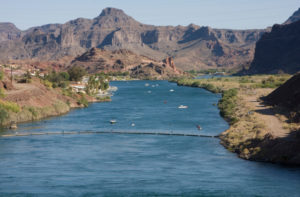 The Obama administration recently released a presidential memorandum (Memorandum)—a tool the executive branch uses to direct the actions of government officials and federal agencies—designed to encourage private and non-profit sector investment in natural resources restoration and public-private partnerships. The Memorandum aims to instill a policy of first avoiding and then minimizing adverse effects to natural resources. Its broad scope affects everything from energy production on federal lands to construction of federal facilities. Specifically, it encourages five federal agencies—the Department of Defense, Department of Interior, Department of Agriculture, US EPA, and National Oceanic and Atmospheric Administration—to streamline regulations for offsetting environmental harm and promoting independent mitigation efforts through clear and consistent implementation of the Memorandum’s policy objectives.
The Obama administration recently released a presidential memorandum (Memorandum)—a tool the executive branch uses to direct the actions of government officials and federal agencies—designed to encourage private and non-profit sector investment in natural resources restoration and public-private partnerships. The Memorandum aims to instill a policy of first avoiding and then minimizing adverse effects to natural resources. Its broad scope affects everything from energy production on federal lands to construction of federal facilities. Specifically, it encourages five federal agencies—the Department of Defense, Department of Interior, Department of Agriculture, US EPA, and National Oceanic and Atmospheric Administration—to streamline regulations for offsetting environmental harm and promoting independent mitigation efforts through clear and consistent implementation of the Memorandum’s policy objectives.
The Memorandum seeks to accomplish its goals by first encouraging proactive development, directing agencies to sequentially avoid negative environmental impacts, minimize impacts, and then to seek compensatory offsets for harm that still occurs only if necessary. Second, it promotes, as a baseline, “no net loss” within the limits of existing laws. Third, it encourages transparency and cooperation, directing agencies to fully incorporate local, state, and federal plans to identify the best places for development and priority areas for protection, paying special attention to irreplaceable resources. To implement this last objective, the Memorandum suggests that agencies take advantage of large-scale plans from any sector or level of government. As a working example of the type of collaboration encouraged, interagency collaborations that resulted in keeping the greater sage grouse from being listed under the Endangered Species Act paved the way for a shift towards landscape-scale mitigation. Successful collaboration to keep the greater sage grouse from being listed influenced the White House in adopting a similar approach in other natural resources contexts.
Since 1980, when the Comprehensive Environmental Response, Compensation, and Liability Act (CERCLA) was passed, there has been a steady trend towards the consideration of natural resources mitigation in business activities at the federal level. The White House noted that “[a]cross the country, the private sector is increasingly looking for opportunities to invest in solutions that restore natural resources.” Increasingly, impact investors desire measurable environmental benefits coupled with conventional return on investment. The Memorandum builds on a number of previous efforts by the Obama administration–including the EPA Water Infrastructure and Resiliency Finance Center and the DOE Clean Energy Investment Center–to encourage private sector demand for impact investing opportunities, recognizing both the need for and emerging interest in positive-sum investments that make a profit in an environmentally and economically sustainable manner.
The idea that clear standards can facilitate both predictability and flexibility while fostering better resource management applies broadly. For example, federal negotiations on the Colorado River during the 2007 Interim Shortage Guidelines and an international water sharing agreement over the past decade have created more certainty in operation of Lakes Powell and Mead while increasing operational flexibility and adaptive management capabilities for reservoir managers at the Bureau of Reclamation, a sub agency of the Department of Interior. Furthermore, wetland banking over the past few decades has demonstrated that “clear standards can make the difference between a troubled program and a successful one that integrated real competition and market principles into the delivery of a very important public benefit.” Proponents of the Memorandum engaged in environmental banking hope that it will provide a more certain and predictable set of rules that will facilitate future banking activities.
Squire Patton Boggs has an advanced institutional knowledge of this emerging regulatory trend requiring business conducted in the federal realm to consider the long-term sustainability of natural resources and the environment. Recently, Squire Patton Boggs, in collaboration with Encourage Capital, an environmental investing firm from New York, published an in depth report identifying eleven blueprints for impact investments that both generate a profit and confer environmental and social benefits related to western water resource management. The report, titled “Liquid Assets,” identifies real world opportunities to conduct business in a manner that is consistent with the presidential Memorandum, including restoration banking. Squire Patton Boggs’ ES&H group has extensive prior experience with Clean Water Act section 404 mitigation banking as well as renewable energy project development in the Southwest and Rocky Mountain Regions, allowing it to offer client solutions and recognize opportunities for projects that can capitalize on the Memorandum’s policy of sustainable natural resources development.

